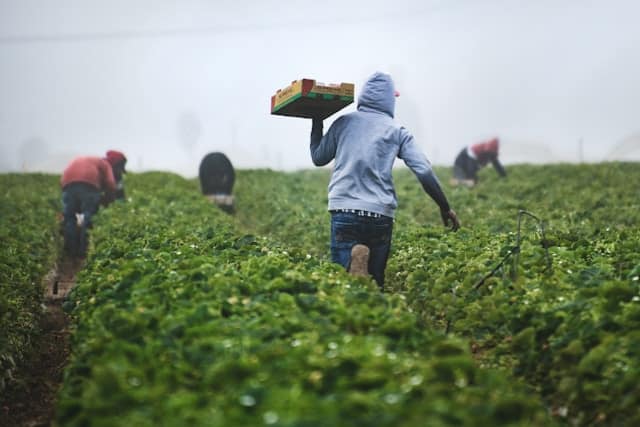How to Cultivate an Organic Roof Garden in a UK Metropolitan Area?

As our urban landscapes continue to burgeon with high-rise buildings and sprawling concrete, the call for more green spaces is reaching a fever pitch. Green roofs, a revolutionary design concept, propose a compelling solution. These rooftops, brimming with life, are not only aesthetically pleasing but also play a crucial role in urban sustainability. In this article, we will delve into the intricacies of cultivating an organic roof garden, focusing on the UK metropolitan area.
The Appeal and Benefits of Green Roofs
The concept of green roofs is not a novel invention. These ‘hanging gardens’ have been part of human civilization for centuries. However, the urgency to balance urban development with nature conservation has brought them into the limelight.
A lire en complément : What’s the Latest in Smart Lock Technology for Residential Security?
Green roofs are essentially man-made gardens atop buildings, featuring a growing medium and a variety of plants. These gardens offer a multitude of benefits, from enhancing biodiversity and bettering air quality to insulating buildings and mitigating urban heat island effects. Their most significant advantage, however, is their contribution to urban water management.
With cities and their surrounding areas becoming increasingly impervious due to the growth of concrete structures, rainfall has fewer places to go. Here, green roofs act as natural sponges. They absorb rainwater, reducing the amount of runoff, and provide a controlled drainage system, thus, preventing floods and soil erosion. Moreover, the plants on green roofs, through the process of transpiration, release the absorbed water back into the atmosphere, creating a natural cooling effect.
A lire en complément : How to Build a Sustainable Wardrobe with Ethically Made UK Clothing Brands?
Understanding the Different Types of Green Roofs
Before you start transforming your rooftop into a verdant paradise, it is essential to understand the different types of green roofs and their unique features.
Primarily, green roofs are divided into two categories: extensive and intensive.
Extensive green roofs are lightweight, require minimal soil depth (usually 2-6 inches), and offer easy access for maintenance and repairs. These roofs typically accommodate hardy, drought-tolerant plants like sedum and are easy to establish. However, the plant diversity is limited, and they don’t usually allow for public access.
On the other hand, intensive green roofs mimic regular ground-level gardens with a deeper soil profile (more than 6 inches) and require a strong roof structure to support their weight. They can support a wide variety of plants, including shrubs and small trees, and are designed to be accessible for public use. These gardens, like any traditional garden, will need regular maintenance, such as irrigation and pruning.
The choice between the two depends on your building’s structure, your budget, and your intent behind creating a rooftop garden.
Choosing the Right Plants for Your Green Roof
The key to a flourishing green roof lies in the choice of plants. In the UK, known for its varied climate, selecting the right plant species is crucial.
In general, plants for green roofs must be hardy, drought-tolerant, and capable of withstanding wind exposure. They should be able to thrive in shallow soil and have a robust root system to prevent wind uplift. Ideally, they should also be low-maintenance and resistant to diseases and pests.
Sedum, a succulent, is a popular choice for extensive green roofs due to its hardiness and minimal maintenance needs. Other plants like chives, thyme, and stonecrop can also be grown. For an intensive roof garden, you can opt for a wider variety of plants, including grasses, perennials, shrubs, and even small trees.
Implementing a Sustainable Irrigation and Drainage System
A successful green roof is underpinned by a well-designed irrigation and drainage system. This is particularly vital in the UK, where rainfall is abundant and regular.
The primary purpose of irrigation is to supplement natural rainfall, especially during dry spells. Depending on the type of green roof and the plants you have chosen, you may require a more sophisticated irrigation system.
As for drainage, a well-designed system is imperative to prevent water-logging and to ensure excess water is efficiently removed from the roof. The drainage layer, usually made of gravel or lightweight aggregates, ensures water is evenly distributed across the roof and excess water is drained off.
Maintaining your Roof Garden
A roof garden, much like a ground garden, requires regular maintenance for flourishing growth. This might include watering during dry spells, weeding, replacing dead plants, and ensuring the drainage system is functioning correctly.
Remember that safety is paramount when accessing your roof garden, especially for maintenance. Always ensure safe and secure access, use appropriate safety equipment, and if necessary, hire professional help.
In conclusion, cultivating an organic roof garden is a remarkable and responsible way to contribute to urban sustainability. It not only creates a sanctuary for you amidst the urban chaos but also plays a crucial role in maintaining biodiversity and managing urban water systems. With the right knowledge and planning, you too can be a proud cultivator of a lush, green rooftop oasis.
How to Choose and Install the Right Root Barrier and Growing Medium
Whilst planning for the installation of your organic roof garden, an essential factor to consider is the installation of an effective root barrier and selecting the right growing medium.
A root barrier is a crucial component of a green roof system. It is designed to prevent plant roots from penetrating the waterproof membrane of the roof. Without a proper root barrier in place, the roots of your plants might grow into the roof itself, causing a leak or a more significant structural issue. While selecting a root barrier, you must consider factors like the type of plants you wish to grow and the specific characteristics of your building.
The growing medium, on the other hand, is the substance in which the plants will grow on your green roof. It plays a vital role in providing your plants with essential nutrients and retaining moisture for their growth. The choice of growing medium will depend largely on the type of green roof you are planning to install. For extensive green roofs, a lighter, less nutrient-rich medium, usually composed of inorganic substances like clay or shale, is recommended. For intensive green roofs, a deeper, more nutrient-dense medium, often including organic matter like compost, is required.
In choosing your root barrier and growing medium, ensure they are compatible with your roof structure. Consult with a green roofing specialist to get the best advice on the most suitable materials and installation methods for your specific project.
Planning for Load Bearing and Safety Measures
A crucial step before embarking on your rooftop farming journey is to assess the load bearing capacity of your roof. It is essential to remember that a green roof involves additional weight on your building, including the weight of the plants, growing medium, irrigation system, and even accumulated rainwater.
Seek professional advice to determine if your roof can support the added weight of a green roof. If necessary, structural improvements might need to be made to prevent any potential damage or collapse.
Alongside load bearing, safety measures are another critical aspect to consider while planning for urban rooftop farming. Ensure you have safe and secure access to your roof for regular maintenance tasks, such as weeding and watering. The use of appropriate safety equipment is recommended, especially for intensive green roofs that may have a variety of heights and surfaces due to the diversity of plants.
Conclusion: The Joy and Responsibility of Urban Rooftop Farming
Cultivating an organic roof garden is a fulfilling and rewarding endeavour. It not only offers a calm retreat from the hustle and bustle of city life but also plays a crucial role in promoting biodiversity, improving air quality and managing urban water systems. It adds a touch of nature to the concrete jungle and creates a peaceful haven for both humans and wildlife.
However, it also comes with a responsibility. A responsibility to ensure that the garden is maintained properly, that it does not pose a threat to the structural integrity of the building, and that it continues to contribute positively to the urban environment.
Remember, an organic roof garden is not just about the aesthetic appeal. It’s about making a committed contribution to the environment, one rooftop at a time. As we continue to transform our urban landscapes, let’s ensure we do so sustainably, prioritising green spaces as much as we do concrete structures.
With careful planning and the right resources, anyone can engage in rooftop farming. So, go ahead, transform your rooftop into a vibrant, green oasis. You’ll be proud of the contribution you’re making to urban sustainability.
To sum up, the path to a successful green roof begins with understanding the different types of green roofs, choosing the right plants, installing a sustainable irrigation and drainage system, selecting the appropriate root barrier and growing medium, and planning for load bearing and safety measures. With these steps in mind, you are well on your way to cultivating your very own thriving, organic roof garden in a UK metropolitan area.
